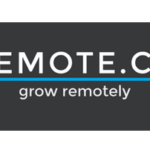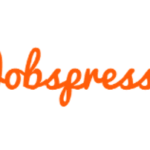Picture this: It’s 7 a.m., and I’m sipping coffee in my cozy home office—sweatpants on, no commute in sight, and a paycheck that makes me grin. That’s the dream, right? Remote work has exploded, and LinkedIn’s become the go-to spot for snagging high-paying work-from-home gigs. But how do you stand out in a sea of applicants? How do you turn your LinkedIn profile into a magnet for recruiters offering six-figure salaries? Let’s dive in. I’m sharing my journey—mistakes, wins, and all—plus practical tips to help you land that dream remote job.
The Remote Work Revolution: Why It’s Here to Stay
Remote work isn’t just a trend; it’s a lifestyle shift. Back in 2020, I was stuck in a cubicle, dreaming of freedom. Then, the world flipped, and suddenly, companies were begging for remote talent. Fast forward to April 2025, and industries like tech, marketing, and consulting are still hiring remote pros at jaw-dropping rates. According to a recent study, 36% of U.S. jobs are now fully remote or hybrid, and that number’s climbing.
The perks? Oh, they’re real. No soul-crushing commute (I once spent 90 minutes stuck on the 405 in L.A.—never again). You save on gas, lunches, and those overpriced work outfits. Plus, you can work from anywhere. I’ve taken calls from my mom’s backyard in Ohio, a beach café in San Diego, even a cabin in the Smoky Mountains. But let’s be honest—it’s not all sunshine. Remote work demands discipline. Ever tried focusing when Netflix is whispering your name? Or when your cat decides your keyboard is a bed? Yeah, it’s a skill.
So, why LinkedIn? It’s not just a digital resume; it’s a networking goldmine. Recruiters are prowling, and high-paying gigs are posted daily. But you’ve got to play the game right. Let’s break it down.
Step 1: Make Your LinkedIn Profile Irresistible
Your profile is your first impression—make it count. A few years ago, my LinkedIn was a ghost town: a grainy photo, a vague headline, and a summary that screamed “I’m boring.” No wonder I wasn’t getting hits. Then I revamped it, and bam—recruiters started sliding into my DMs.
-
Headline: Ditch the generic “Marketing Professional.” Try something like “Remote Digital Marketing Expert | Driving ROI from My Home Office.” Be specific. Show you’re remote-ready.
-
Summary: This is your elevator pitch. Share your story. I wrote about how I pivoted from in-office chaos to thriving remotely, weaving in skills like project management and Zoom wizardry. Add a dash of personality—maybe mention your love for coffee or your knack for untangling tech glitches.
-
Skills & Certifications: List relevant ones (think: Google Analytics, Salesforce, or that obscure coding course you aced). I added “Remote Collaboration” as a skill. Sounds niche, but it got attention.
-
Photo: No selfies. Get a clear, professional headshot. I used a friend’s DSLR in natural light—worked like a charm.
Pro tip: Engage actively. Comment on posts, share articles, like updates. I once commented on a CEO’s post about remote work, and it led to a coffee chat—and a job offer. Coincidence? I think not.
Step 2: Hunt Smart for Remote Gigs
LinkedIn’s job search is a beast, but it’s your beast. Use filters like “Remote” and “Salary Range” to narrow down high-paying roles. Tech’s a goldmine—think software engineering, UX design, or data analysis. Marketing and consulting are hot too. I landed a $120K remote marketing gig last year by filtering for “Director” roles with “Remote” checked.
Turn on the “Open to Work” feature. It’s like a neon sign for recruiters. Follow companies known for remote work—think GitLab, Zapier, or Automattic. I stalked GitLab’s page for weeks, liked their posts, and when a role popped up, I was ready.
Here’s a trick: Search for “remote” in the job description, not just the filter. Some postings slip through the cracks. And don’t sleep on smaller companies. A startup once offered me a role with equity that turned into a windfall when they got acquired. Risky? Sure. Worth it? Heck yeah.
Step 3: Network Like Your Career Depends on It (It Does)
Networking isn’t just schmoozing—it’s your secret weapon. I used to think it was slimy, but then I realized it’s just… talking. Connect with recruiters in your field. I messaged a tech recruiter with a simple, “Hey, I love your posts about remote hiring trends. Any tips for breaking into SaaS?” She replied, and we’re still in touch.
Join LinkedIn groups like “Remote Work Professionals” or industry-specific ones. I found a goldmine in a group for digital marketers—someone posted about a remote role at a company I’d never heard of. I applied, nailed the interview, and worked there for two years.
Share content too. Post about your wins (humbly, of course). I shared a quick tip about managing remote teams, and it got 200 likes—and a message from a hiring manager. Comment on others’ posts. Be genuine. Ask questions. It’s like digital small talk, but it pays off.
Oh, and referrals? Game-changers. I once asked a former colleague to vouch for me at her company. She did, and I skipped the first round of interviews. Don’t be shy—reach out. Most people love helping.
Step 4: Nail the Application Process
Your resume and cover letter need to scream “I’m perfect for remote work.” Tailor them. I once sent a generic resume and got ghosted. Lesson learned. Highlight skills like:
-
Time Management: Mention how you juggle deadlines across time zones.
-
Communication: Talk up your Slack or email prowess.
-
Tech Savvy: Know your way around Trello, Asana, or Zoom? Say so.
In interviews, address remote challenges head-on. I was asked, “How do you stay productive at home?” I shared a story about my Pomodoro timer obsession and how I block “deep work” hours. They ate it up.
Virtual interviews are their own beast. Test your tech—camera, mic, lighting. I once had a glitchy Zoom call that tanked my chances. Now I do a dry run every time. Set up a clean background (no laundry piles, please). And smile—it’s contagious, even through a screen.
Step 5: Negotiate Like a Pro
You’ve got an offer—congrats! Now, don’t just take it. Negotiate. Research salaries on Glassdoor or Levels.fyi. I once lowballed myself by $20K because I didn’t do my homework. Never again.
For remote roles, ask about perks beyond salary. Equipment stipends? Flexible hours? Professional development budgets? I negotiated a $2,000 annual learning stipend that paid for a coding bootcamp. Be confident but kind. Say, “I’m thrilled about this offer. Based on industry benchmarks, I was hoping for [X]. Can we explore that?” It works more often than you’d think.
Step 6: Thrive in Your Remote Role
You’ve landed the gig—now what? Set up a killer home office. I splurged on a standing desk and noise-canceling headphones. Worth every penny. Create routines. I start my day with a 10-minute walk to “commute” to work. Sounds silly, but it resets my brain.
Boundaries are key. I used to answer emails at midnight. Burnout city. Now I log off at 6 p.m. Communicate clearly with your team. Over-communicate, even. I share daily updates on Slack to keep everyone in the loop.
Keep learning. Remote work evolves fast. I took a free course on AI tools last month, and now I’m the go-to person for ChatGPT hacks at work. Stay curious, stay relevant.
Wrapping It Up: Your Remote Dream Job Awaits
Landing a high-paying remote job on LinkedIn isn’t magic—it’s strategy, hustle, and a sprinkle of charm. Optimize your profile, hunt smart, network like crazy, nail your applications, negotiate boldly, and thrive in your role. It’s not easy, but it’s so worth it. I went from cubicle misery to working in my PJs, earning more than I ever thought possible. You can too.
So, what’s stopping you? Dust off that LinkedIn profile. Connect with a recruiter. Apply for that dream gig. Your future self—sipping coffee in sweatpants, laughing at rush-hour traffic—is cheering you on.









